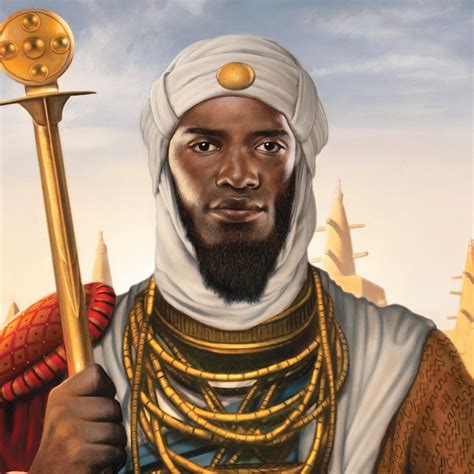Mansa Musa, the tenth Mansa (king) of the Mali Empire, is renowned as one of the wealthiest and most influential rulers in African history. His reign, which spanned from 1312 to 1337, witnessed the empire’s expansion, the development of extensive trade networks, and the promotion of Islamic culture.

Rise to Power and Expansion of the Empire
Mansa Musa, born as Kankan Musa, ascended to the throne following the death of his predecessor, Abu Bakr II. He inherited a vast empire that stretched across present-day Mali, Senegal, Mauritania, Guinea, and Burkina Faso.
During his reign, Mansa Musa expanded the empire’s boundaries significantly. He conquered several neighboring kingdoms, including the Songhai Empire, and extended his influence over the Trans-Saharan trade routes. By the mid-14th century, the Mali Empire stood as one of the largest and most powerful empires in West Africa.
Pilgrimage to Mecca and Legendary Wealth
In 1324, Mansa Musa embarked on a legendary pilgrimage to Mecca. Accompanied by a vast entourage of thousands of attendants, soldiers, and servants, he traveled in grand style. Along the way, he distributed enormous amounts of gold, reportedly spending an estimated 100 million dinars, which had a significant impact on the economies of Egypt and other regions.
Musa’s pilgrimage not only demonstrated his immense wealth but also brought the Mali Empire to international prominence. The European travelers who witnessed his procession described his lavish spending and extraordinary wealth, leading to the empire’s inclusion in European maps and accounts.
Development of Trade and Commerce
Under Mansa Musa’s leadership, the Mali Empire became a hub of trade and commerce. The trans-Saharan trade routes flourished, connecting the empire with North Africa, the Middle East, and Europe. Gold, slaves, salt, and other commodities were traded in substantial quantities, generating enormous revenue for the empire.
In addition, Mansa Musa promoted the development of agriculture, industry, and infrastructure. He established efficient systems for taxation and revenue collection, which ensured the empire’s financial stability and prosperity.
Promotion of Islamic Culture
Mansa Musa was a devout Muslim, and during his reign, he actively promoted Islamic culture throughout the empire. He constructed numerous mosques and madrasas (Islamic schools) in cities such as Timbuktu, Djenné, and Gao. He also invited scholars and intellectuals from across the Islamic world to reside in the empire.
The promotion of Islamic culture played a significant role in the development of the empire’s intellectual and cultural life. Timbuktu became a renowned center of Islamic scholarship and attracted scholars from far and wide.
Legacy and Impact
Mansa Musa’s reign marked a golden age for the Mali Empire. His leadership, wealth, and influence contributed to the empire’s expansion, prosperity, and cultural development. The empire’s legacy continued long after his death, serving as a reminder of the achievements of African civilizations.
Timeline of Mansa Musa’s Reign
- 1312: Ascends to the throne of the Mali Empire
- 1324: Embarks on a legendary pilgrimage to Mecca
- 1325-1326: Returns from Mecca to a tumultuous welcome
- 1332: Conquers the Songhai Empire
- 1337: Dies during a military campaign
Table of Mansa Musa’s Military Conquests
| Year | Conquered Kingdom |
|---|---|
| 1325 | Tekrur |
| 1328 | Gao |
| 1332 | Songhai |
| 1333 | Tadmekka |
Table of Mansa Musa’s Architectural Achievements
| Building | Location |
|---|---|
| Great Mosque of Djenné | Djenné, Mali |
| Sankoré Madrasa | Timbuktu, Mali |
| Mosque of Gao | Gao, Mali |
| Masjid al-Qubbah | Timbuktu, Mali |
Table of Mansa Musa’s Economic Policies
| Policy | Impact |
|---|---|
| Promotion of trade | Facilitated the flow of goods and revenue |
| Efficient taxation system | Ensured financial stability and prosperity |
| Development of agriculture and industry | Increased economic productivity |
| Gold and salt mining | Major sources of revenue |
Table of Mansa Musa’s Cultural Impact
| Initiative | Effect |
|---|---|
| Promotion of Islamic culture | Led to the development of Timbuktu as a center of scholarship |
| Patronage of the arts | Encouraged the flourishing of music, poetry, and literature |
| Development of written scripts | Facilitated communication and record-keeping |
| Construction of libraries and universities | Preserved and disseminated knowledge |
